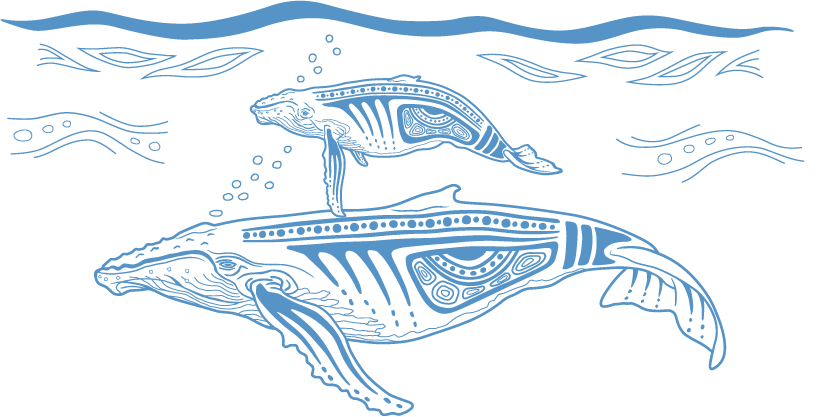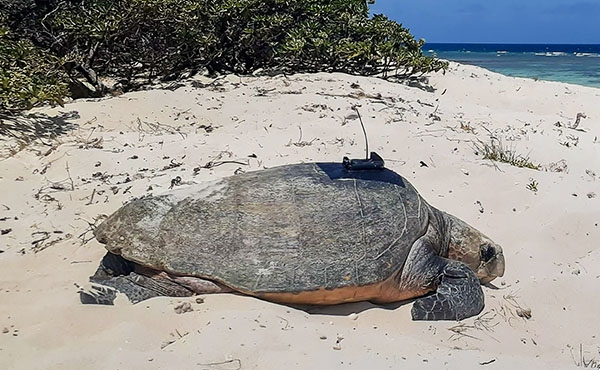Individuals in the eastern Australian subpopulation of humpback whales typically migrate from feeding areas in the Southern Ocean along the east coast of Australia to breed in the Region. Prior to exploitation, the eastern subpopulation comprised an estimated 26,000 whales 2134 but whaling had reduced the subpopulation to 200 to 500 whales in 1962.2135 The population was estimated to consist of more than 24,000 whales in 2015, comparable to estimates of the pre-whaling population, and it continues to grow at a rapid rate.504 The recovery of humpback whales has been assisted by having little competition for food with other whale species whose populations were also historically depleted.
Humpback whales have recovered to pre-whaling levels
The influence of climate variability on humpbacks in the Southern Hemisphere is under-studied.501 However, some breeding habitats are predicted to become unsuitably warm by the end of this century.2136 Climate-related changes to prey supply may also result in calving occurring further south.2137 Generally, baleen whale populations are predicted to decline by the year 2100 because of increasing inter-specific competition 2138 and because ocean acidification, warming and sea ice dynamics are reducing habitat for krill development.2139
Declines in reproductive success have been associated with environmental conditions generating insufficient prey to support the energy demands for pregnancy and lactation in some Northern Hemisphere humpback whale populations.2140 Timing of migrations has also shifted in response to earlier ice break and increases in sea surface temperature.2141 The resilience of humpback whales to ongoing climate change depends on behavioural adaptability in terms of diet and movements.
Local-scale threats to humpback whales include the risk of vessel strike, which is increasing as more vessels and whales share the water of the Marine Park.506 Humpback whales’ abundance in coastal waters makes them prone to injury or mortality from entanglement in fishing equipment, shark nets and marine debris. Underwater vessel noise can cause behavioural disturbance in humpback whales: simulated loud boat noise has been shown to increase swim speeds and respiration rates in individual animals.2142 Habitat degradation, including from coastal development, may become a greater issue as humpback whale and human populations grow.
Management
Since whaling was banned, other management initiatives have included establishing best-practice guidelines for whale watching, researching gear modification, spatial closures and using whale alarms to reduce entanglement.2138 As the population increases and climate changes, ongoing monitoring will be required to assess the future risk to humpback whales from marine activities, coastal development and changes to prey communities.
Humpback whales are a matter of national environmental significance under the EPBC Act because they are protected as Cetaceans and are a listed migratory species under the Bonn Convention. In 2021, the humpback whale was removed from the vulnerable list under the Nature Conservation (Animals) Regulation 2020 (Qld) and is now considered least concern. The Operational Policy on Whale and Dolphin Conservation in the Great Barrier Reef Marine Park complements measures outlined in Queensland’s Nature Conservation (Whale and Dolphin) Conservation Plan 1997 to further address the risks to whales.
Evidence for recovery or decline
After decades of whaling reduced the population to possibly as few as 200 individuals by the early 1960s, the eastern Australia humpback whale population has since recovered to its pre-whaling levels. The population size was estimated to be approximately 24,000 whales in 2015,504 and the growth rate was estimated growth rate to be 10 to 11 per cent per year (close to the maximum plausible rate of increase of 11.8 per cent).2143 The population may have increased to a projected 40,000 animals and is predicted to reach carrying capacity by 2026.504 Humpback whales exhibit the strongest recovery of all whale species and, as a result, were removed from Australia’s threatened species list in 2022.505


